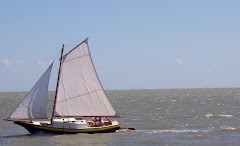A PLANET IN PLAIN VIEW
(AS PRINTED IN DOLPHIN TALK)
Most moons in the solar system are slowly moving closer to their host planet but our moon is not, it is moving away from earth at approximately 3” per year. The McDonald Observatory in Texas actually watches its wobble and minor movements with lasers. The sun holds the greatest amount of gravitational pull on our moon, much greater than earth. Our planet only has 54% of gravitational hold on the moon thus explaining why its moving away; and our moon is larger than the planet mercury.
But what makes a planet has been a topic of controversy for decades, as Pluto has become the latest casualty and demoted to Drawf Planet. The IAU “International Astronomical Union” has set a definition for what makes a celestial body a planet, saying that it must be a rocky body with layers and be geologically active. We know that the moon has detectable quakes and was geologically active in the past, also it must orbit the sun. I have still not found the answer as to why they consider the gas giants as planets when they do not know if they have rocky cores and layers. Also, some argue that our moon “does” orbit the sun as it also orbits the earth on its ecliptical plane.
Some physicists argue that the moon will someday become a planet when it breaks free from earths gravity, and still others argue not until its barycenter “center point of gravity” is located outside the surface of earth, but the barycenter of Pluto and Ceres is well outside the surface of Pluto and they call Ceres “ Pluto’s moon”. Both earth and moon have a slight wobble in their orbits, that is why sometimes we see the moon’s “liberation” causing us to see around the darker side slightly at certain times; so both have a gravitational affect on each other.
The moon was known as a planet until Copernicus in 1543, and it was Christiaan Huygens who first coined the word “moon” in his papers “Luna Saturnia” It was Johannes Kepler who first used the term “Satellite” from the Latin “satelles” in 1610 meaning “guard” “attendant” or “companion” and today is the most common term used in science “natural satellite”.
But when you look to the heavens you are seeing another planet right there in plain view, or if you wish, a beautiful moon, because they are made of the same stuff, The real issue in the debate over moon or planet is the meaning put to the word “planet” than an objective astronomical or physical reality.
Wesley J Hunt wes81461@yahoo.com









